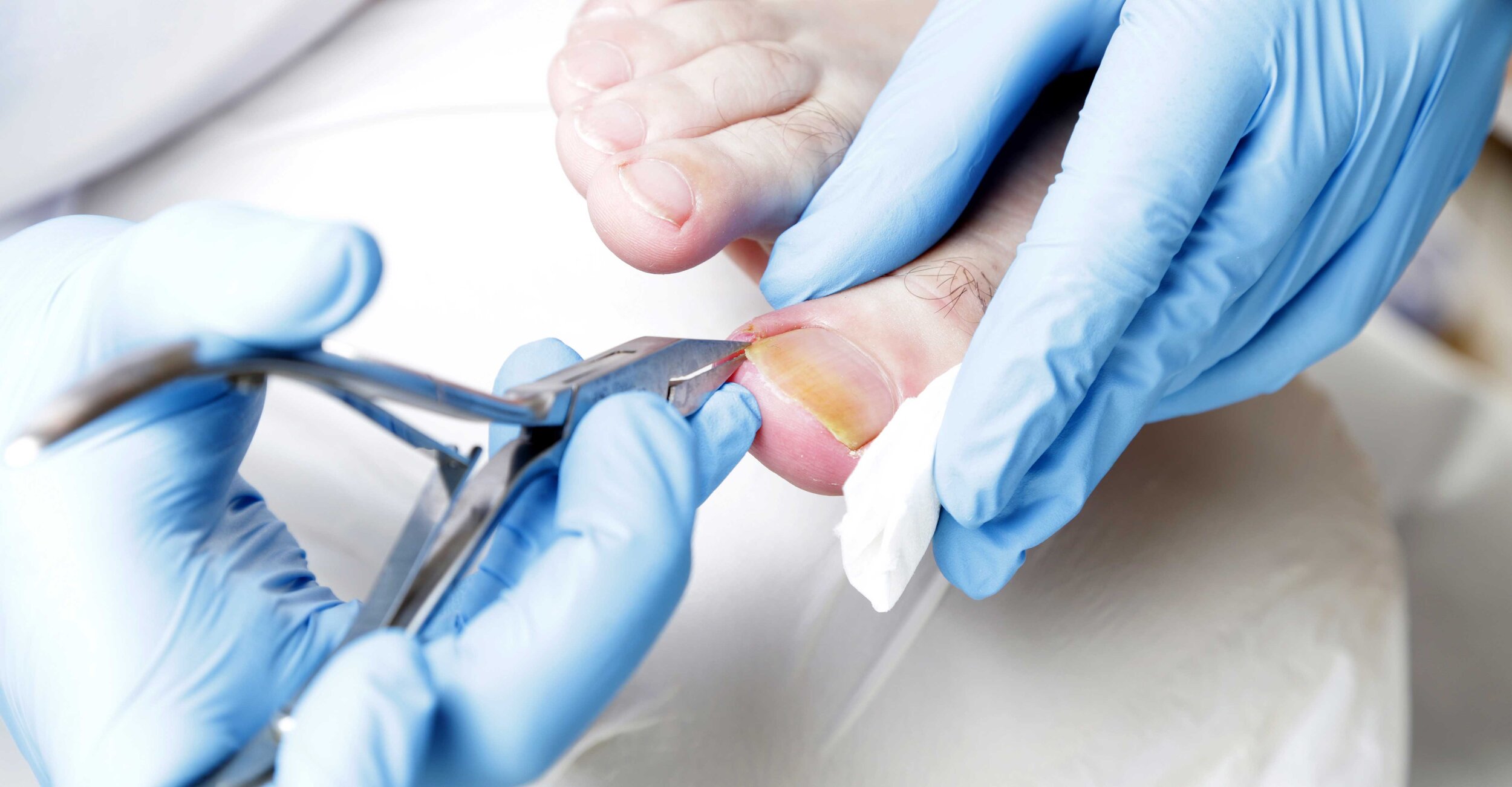
Ingrown Toenail
An ingrown toenail results from the side or corner of your toenail, usually on your big toe, growing into the surrounding skin. The area surrounding an ingrown toenail becomes painful, red, and swollen.
Ingrown toenails usually are a result of your foot care and habits. If ingrown toenails are a recurring problem, you may not be trimming your nails properly. It’s important to trim them straight across and not too short.
Contributing Factors
Poor foot hygiene
A toe injury, such as stubbing your toe or dropping something on it
Wearing too-tight shoes that push your nail into your skin
Prevention
Trimming your toenails straight across
Wearing shoes that fit properly
Keeping your feet and toenails clean
Relieving pressure from your feet and toes after exercising by allowing your feet to breathe
At-home Treatment
Most ingrown toenails are minor and heal within 2-4 days with simple at-home care. If you’re experiencing only slight discomfort from your ingrown toenail, you should:
Soak your feet in warm water 15-20 minutes at a time, 3-4 times a day
After soaking, apply antibiotic ointment or cream to the affected area and cover it with a bandage
Wear open-toed shoes to avoid irritating the affected toe
Take an over-the-counter pain reliever to manage the discomfort
Seek Medical Attention
An ingrown toenail requires medical attention if it becomes infected. Signs of infection include:
Increased redness, swelling, and pain
Pus draining from the area
A foul smell
Diagnosis and Treatment
You can treat most ingrown toenails at home, but they sometimes lead to infection. You may also want help managing the pain and improving your grooming and hygiene habits.
However, if you have an infection, Dr. Hanawalt prescribes a course of antibiotics. If the infection persists, she can perform a surgery to remove the affected portion of the nail. Surgery to treat an ingrown toenail is an outpatient procedure that you undergo while under local anesthetic.
If you have diabetes, it’s especially important to make note of any wounds on your feet, including ingrown toenails, and schedule an appointment with Dr. Hanawalt when they occur. That’s because the condition slows healing and makes you more prone to infection.